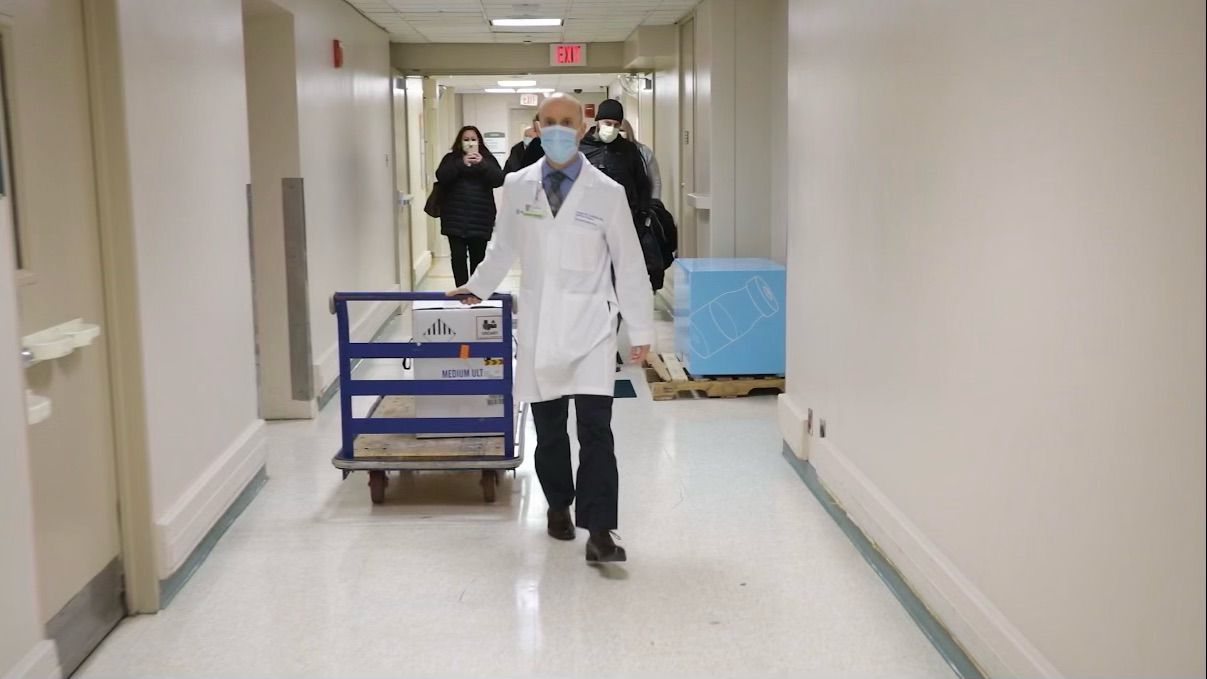COLUMBUS, Ohio — Last week, when the first shipments of the Pfizer-BioNTech COVID-19 vaccine began arriving at U.S. distribution sites, officials quickly realized nurses were able to draw six or seven shots from vials that were labeled to contain five doses. But not every hospital is using those extra doses.
The Food and Drug Administration greenlit the use of a sixth or seventh dose, which changed the calculus for how many people can be vaccinated the coming weeks.
But using a sixth shot is complicated and potentially risky, says infectious disease specialist Dr. Joseph Gastaldo of OhioHealth, where officials decided to discard any extra doses.
The reason: Pfizer’s vaccine is a two-dose regimen that requires a second shot three weeks after the first. Vaccine administration sites choosing to administer extra shot will have to come with a solution to immunize recipients in about three weeks should it be the case that nurses are able to draw fewer syringes on the return date. That's tricky, Gastaldo said.
“Imagine if you were a person who got the seventh dose out of a vial and then you come back three weeks later and they say, ‘You know what, we got the same amount of vials but we couldn't get that extra dose out of the vial,’” Gastaldo said.
In Ohio, Gov. Mike DeWine said he made a call to advise state hospitals they should use as many doses from the vials as possible.
“They asked me, ‘What are we going to do?’ I said, 'We’re going to keep giving shots,'” DeWine said. “We do not want to waste any of it.”
The governor’s guidance was consistent with the FDA’s recommendation.
“At this time, given the public health emergency, FDA is advising that it is acceptable to use every full dose obtainable (the sixth, or possibly even a seventh) from each vial,” a statement said.
However, Pfizer has not told distribution sites to use extra doses, stating the company cannot comment on the matter.
Gastaldo said the ability to extract six or seven doses depends on how the person administering the doses draws the fluid into the syringes.
“It's not consistent,” Gastaldo said. “A lot of it has to do with the person drawing up the syringe and them milking out every drop, but that is a challenge.”
OhioHealth received about 1,950 doses of the Pfizer vaccine last week and 10,400 doses of Moderna’s vaccine this week. The shipments arrived at the health system’s “storage hub” at OhioHealth Riverside, and the vaccine is then transported to most of OhioHealth’s 11 other hospitals.
The Moderna vaccine shipment will help OhioHealth reach its frontline employees, Gastaldo said. In total, OhioHealth employs about 30,000 people.
Ohio State Wexner Medical Center said it administered 1,032 shots out of its first 975-dose shipment, and distributors of the vaccine could report slightly higher numbers for future shipments now that there is more attention on maximizing doses. On the first day of administration, hospitals were confused what to do with the extra doses and, in some instances, doses were discarded due to that uncertainty.
With a significant population of Americans unsure about the vaccine, ensuring confidence a second dose will be there is a priority, Gastaldo said.
“We can't plan that all of the vials are going to have six doses in them. We can't plan that all the vials have seven doses in them. We have found some vials with five, some with six, very rarely some with seven,” he said. “We are a much bigger healthcare system than Ohio State or Mount Carmel, and we don't have a lot of wiggle room when it comes to planning.”
There is some flexibility when it comes to scheduling the second shot in the Pfizer sequence. It can be administered no earlier than 17 days after the first shot but after the 21-day period has passed there is a wider window when the booster shot could be administered.
Hospitals say they will work to reschedule a second-shot if an emergency situation arises, but while supplies are limited the logistics of rescheduling remain an unknown.



